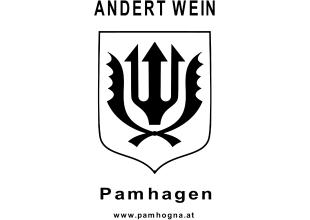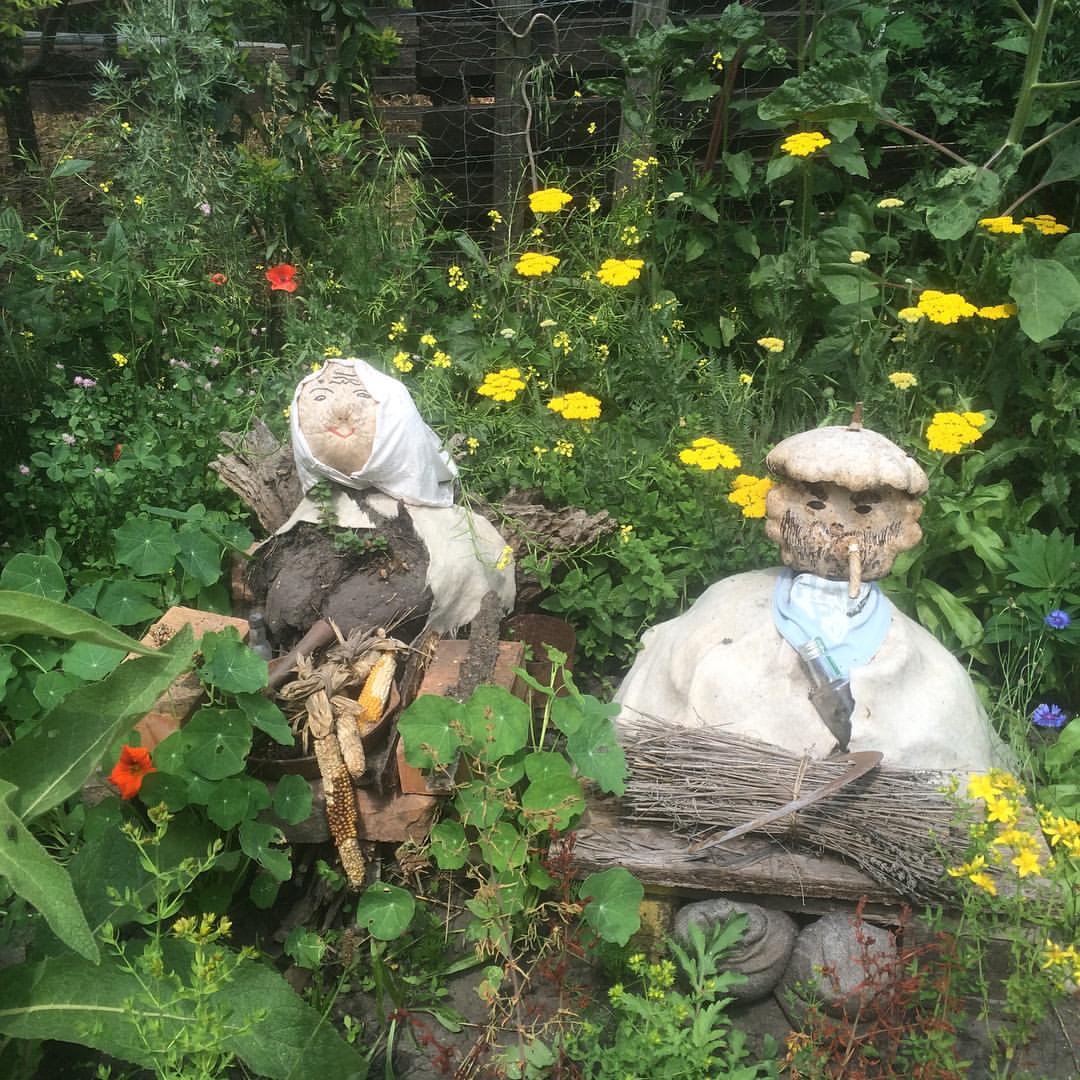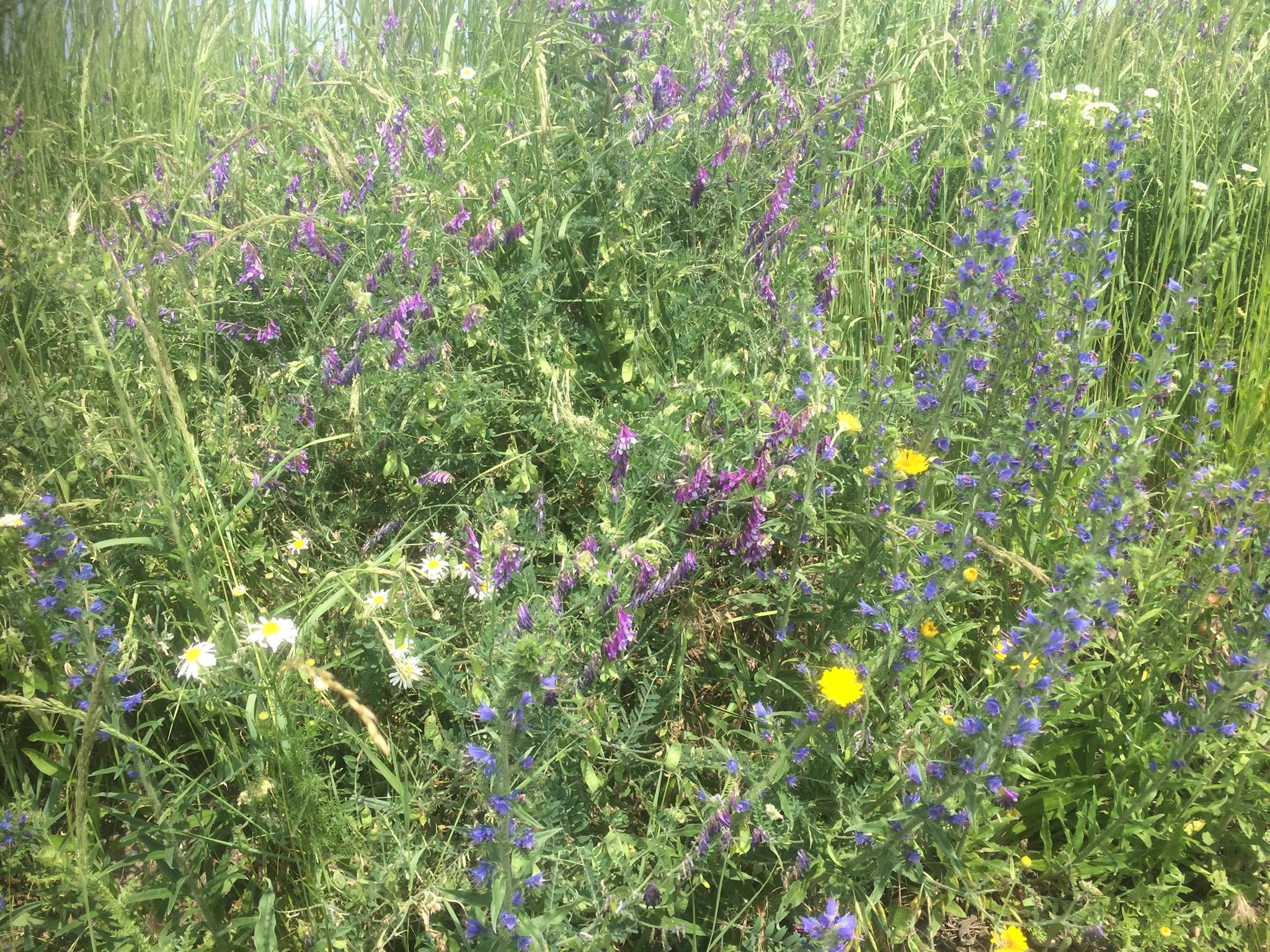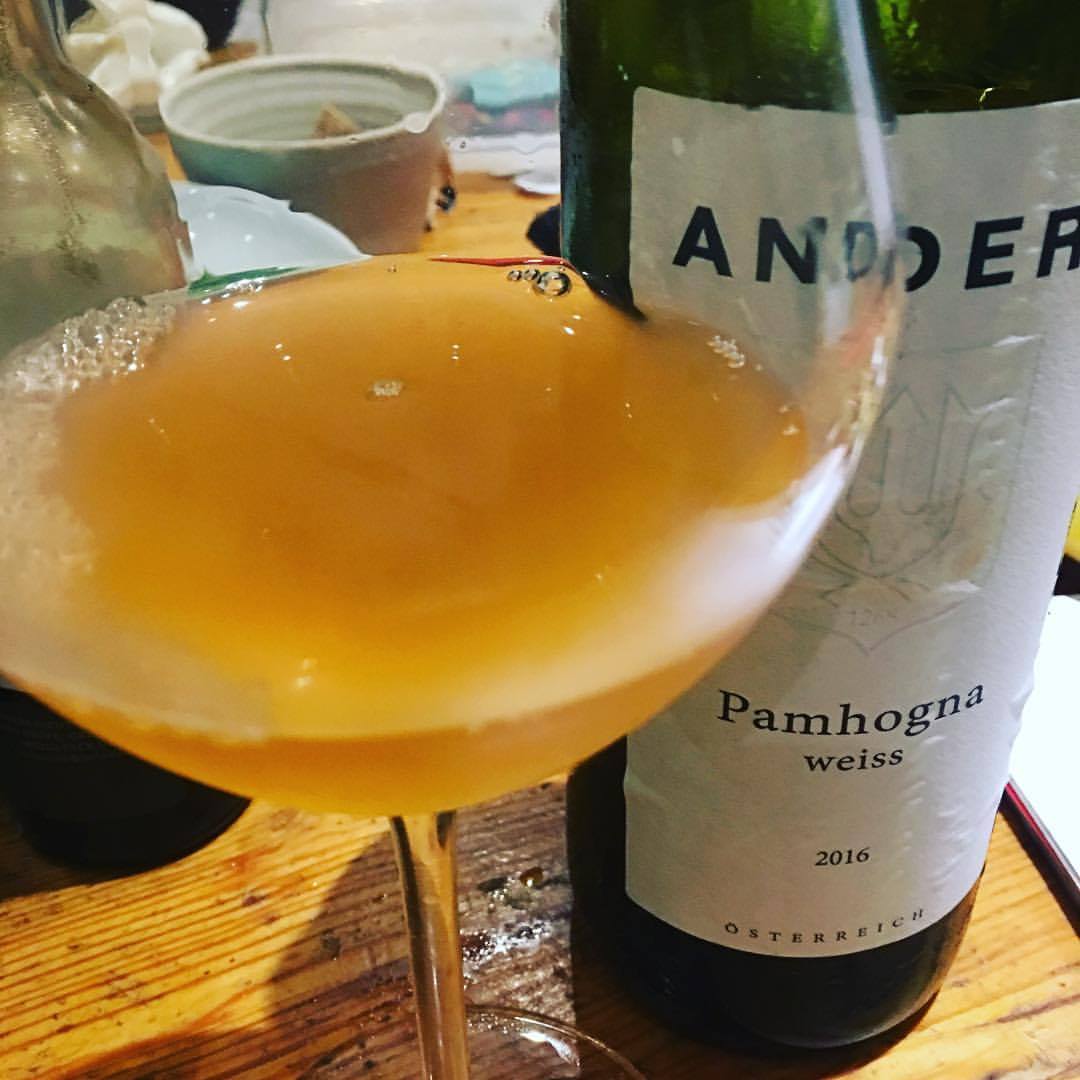
Michael Andert was born into a large family and grew up on a farm with mixed agriculture, livestock and viticulture and learned to respect his family, his animals and the associated work. Today, as winemaker, this respect has deepened even more:
We think we found the right way in the biodynamic economy to press the grapes into sustainable and valuable wines. We respect the earthly and cosmic influences on our wines, our soil and, also we respect the influence of the seasons on our wines.
To understand the wines of Andert you must come for an excursion to the vineyards themselves. The local wine is of the locale after all.
Preamble

We were taken to the small plot of vines that comprise the Gemischter Sotz, a field blend of various white grapes. The location of the vineyard is in itself unremarkable, being a flat piece of land that was once under water (the marshes around here were drained some time ago) although some of the boggy, low-lying areas still host an extraordinary variety of birds. This small vineyard is humming with life. They have installed a box in a lone tree at one end of the row of vines for falcons to nest in. Herbs and grasses grow bountifully– spring onions, leeks, fennel, wild garlic, oregano and countless other herbs, edible (as it turns out) flowers and weeds. Michael stops and stoops occasionally plucking a plant and enjoins me to nibble this flower or that leaf. Whether it is the effect of the sun beating down and the earth warming up but even the bitter leaves taste nourishing. Pesky deer are kept away by the old- fashioned expedient of a wild boar’s hide draped over the wires. A flock of mixed sheep (including a rare local breed) are grazing in neighbouring pasture, whilst cockerels, guinea fowls, ducks and geese gabble loquaciously in the adjacent pen.
Michael repairs into a hut and brings out a loaf of sourdough bread – baked by his neighbour – a water buffalo wurst and some homemade wild boar prosciutto and we have an impromptu picnic of meat, herbs and edible flowers washed down with chilled Zweigelt. Of course, it is the most delicious thing imaginable.
This is biodynamics felt in the heart and practised with the head. Michael and Erich have noticed a palpable improvement in the wines since they have moved to this type of farming:
The wines are gaining individuality and have more character. Also, they are more digestible and more stable. Due to the aging in oak barrels in our cellar, the complexity of the wines is underlined, which ensures a long shelf life.
Talking to natural growers, it’s clear that they view treating the vineyard as a living organism, as well as working without chemicals or additives in the winery, as a prerequisite for making quality wine. There is a certain Occam’s razor logic to this approach –that by not over-complicating procedures you arrive naturally at a truth-in-wine. Biodynamics is predicated on observing and responding to the needs of the vineyard rather than following a prescriptive course of action. Working responsively in the vines tends to be mirrored in the actions in the winery. Knowing what you have (in the quality of grapes) means that you tend to do what you feel is right. It is not pure science – there is intuition, gut instinct, feel and taste.
Michael is a farmer. He is as proud of his livestock as his vineyard. He strides, even bounds between the vines, taking deep breaths as if he wanted to inhale the entirety of his surroundings. He has also created a garden, one exploding with flowers and plants. A narrow path wends serendipitously through clumps and clusters of undergrowth, across little wooden bridges over small ponds populated with frogs. We wander by some beehives and discover little clearings populated by strange mud and stone creatures and poppets. Cow horns are ubiquitous – the symbols of fertility are rife. Occasionally, one will find an improving text from Goethe or Confucius nailed to a fence post, jolly exhortations, hailing and hugging nature. A harbour for wild life rather than a monoculture of grape growing the vineyard is part of this celebration. And it is so much more. Andert makes his garden an everywhere and reminds one that nature is therapeutic. Medicines are made from extracts of herbs and plants, and victual nourishment too, and, of course, there is the wine – one cannot but laugh with pleasure at the sheer loving immersion in a place that is humming on every level.
The analytic doctor can wait – this was breakfast in the vines. As we gorged on home smoked meats and a variety of local cheeses accompanied with homemade chutneys, mustards and relishes we drank some Zweigelt rose, a zero-sulphur red Zweigelt that everyone loved (the wine talked) and took the Rulander for the amble through the enchanted garden. “Wie herrlich leuchtet mir Die Natur” (Goethe). Indeed.
By the way the Andert barrel cellar is a no-tech affair. There is no electricity, so tasting is done by candle light. You could put the “bottling line” in your back pocket. These are the obverse of technical wines.

And so to the wines. 2016 was one of those vintages that producers would prefer to forget and the Andert vineyards were hit by a late frost. Nevertheless, there was some secondary growth on the vines and a few survived to yield their grapes and tell the tale of the vintage.
We begin with the Pamhogna Weiss – named after the village in which the Anderts live. The winemaking is straightforward. Manually harvested grapes are destemmed into a mixture of used barriques and 500-litre oak barrels. The juice remains in contact with its skins for 7-8 days, and then starts fermenting with indigenous yeasts and without temperature control. Maturation is in the same barrels as the ferment takes place. The blend is 70% Rulander (Pinot Gris), 25% Neuberger and 5% Weissburgunder. This wine has an intense golden-yellow colour and a lovely herbal fragrance. It requires carafeing before all the elements harmonise – from the exotic white pear and pineapple fruit aromas to the refreshing acid and fine structure conferred by a gentle clasp of tannin.
The vines in which we were standing would normally give us the Gemischter Sotz, a melange of co-fermented Neuburger, Grüner Veltliner, Malvazia, Muskat Ottonel, Sylvaner. This is a fresh and aromatic white with a friendly streak of acidity. A few bottles were made in 16.
The Rulander takes us to Princic country, possessing an exquisite salmon colour with amber highlights. The nose, or whatever we choose to call it, is (sweet)meaty and a little bit smoky, the palate is smooth and almost velvety with suggestions of pink grapefruit, yet also salty with a bitter almond note on the finish.
All Andert’s wines have a faintly medicinal bitter, fennel-inflected after-taste. This may to be do with the fact that the vines share their space with wild fennel and many other plants and herbs that have the same anise profile. They also possess what we like to describe as “natural energy”. Easy in themselves or with a relaxed intensity, not inviting judgement, but utterly and vitally redolent of the vineyards from which they are born.
We have a reasonable amount of Pamhogna 16, just a tiny bit of Gemischter from the same vintage, and some Gruner Veltliner (called Anadjucka) and Rulander from the 15 vintage.

2016 Gemischter Sotz
2016 Pamhogna Weiss
2015 Rulander
2015 Gruner Veltliner “Anadjucka”
2015 PM ~ Petit Manseng (allocation only)
2014 Zweigelt Mit Ohne Alles
Interested in finding out more about any of the wines made by Andert? Buy online here or contact us directly…
Retail: shop@lescaves.co.uk / 01483 554750

